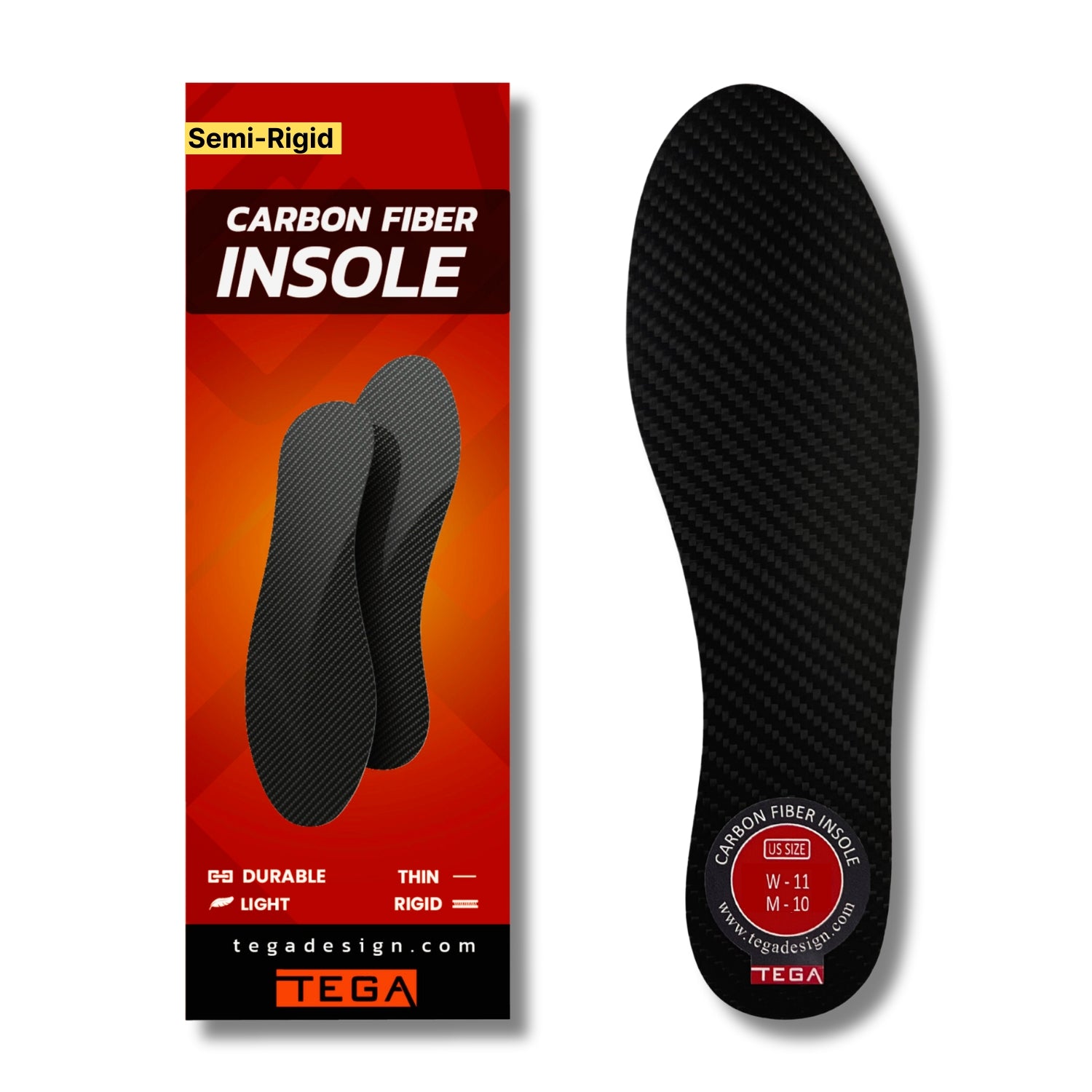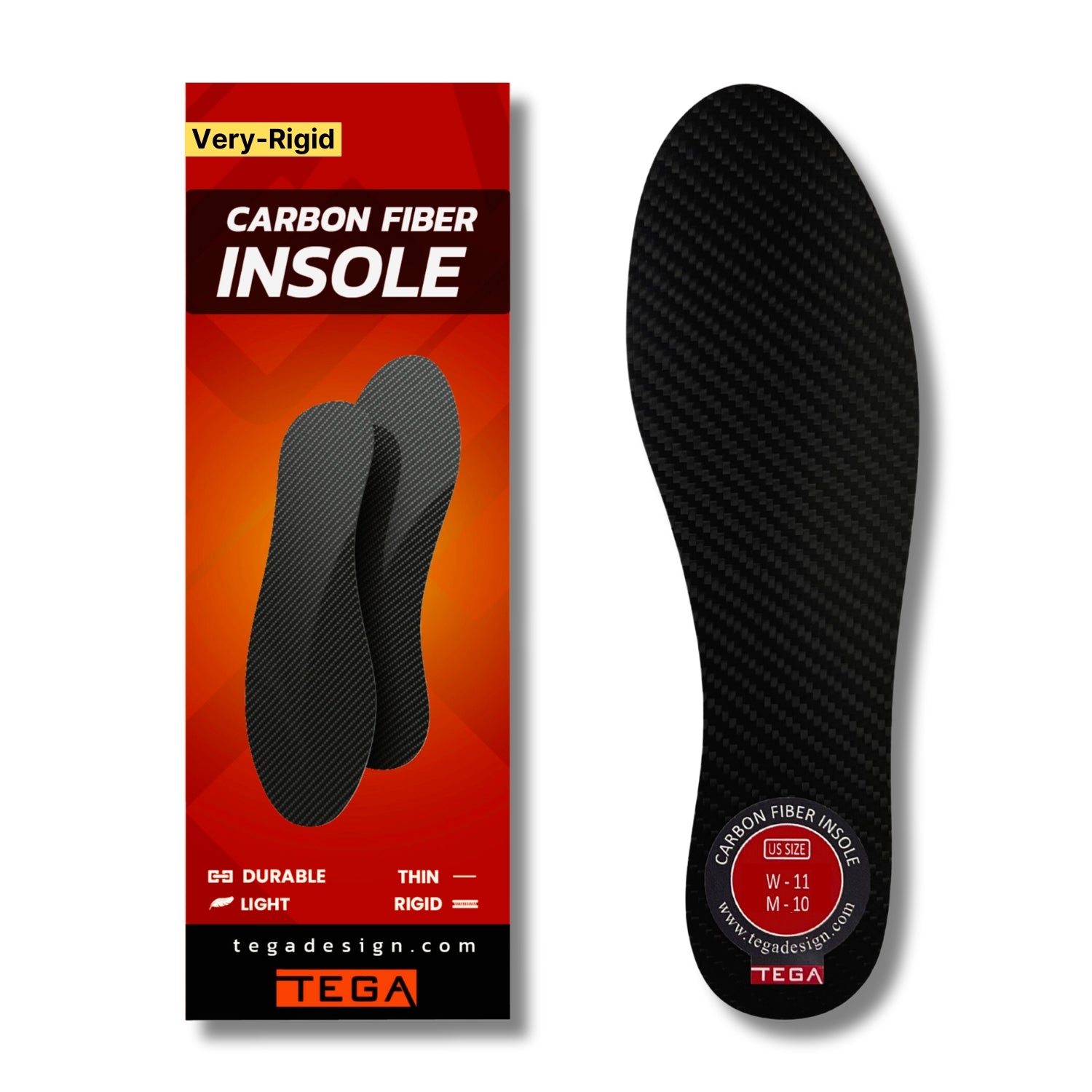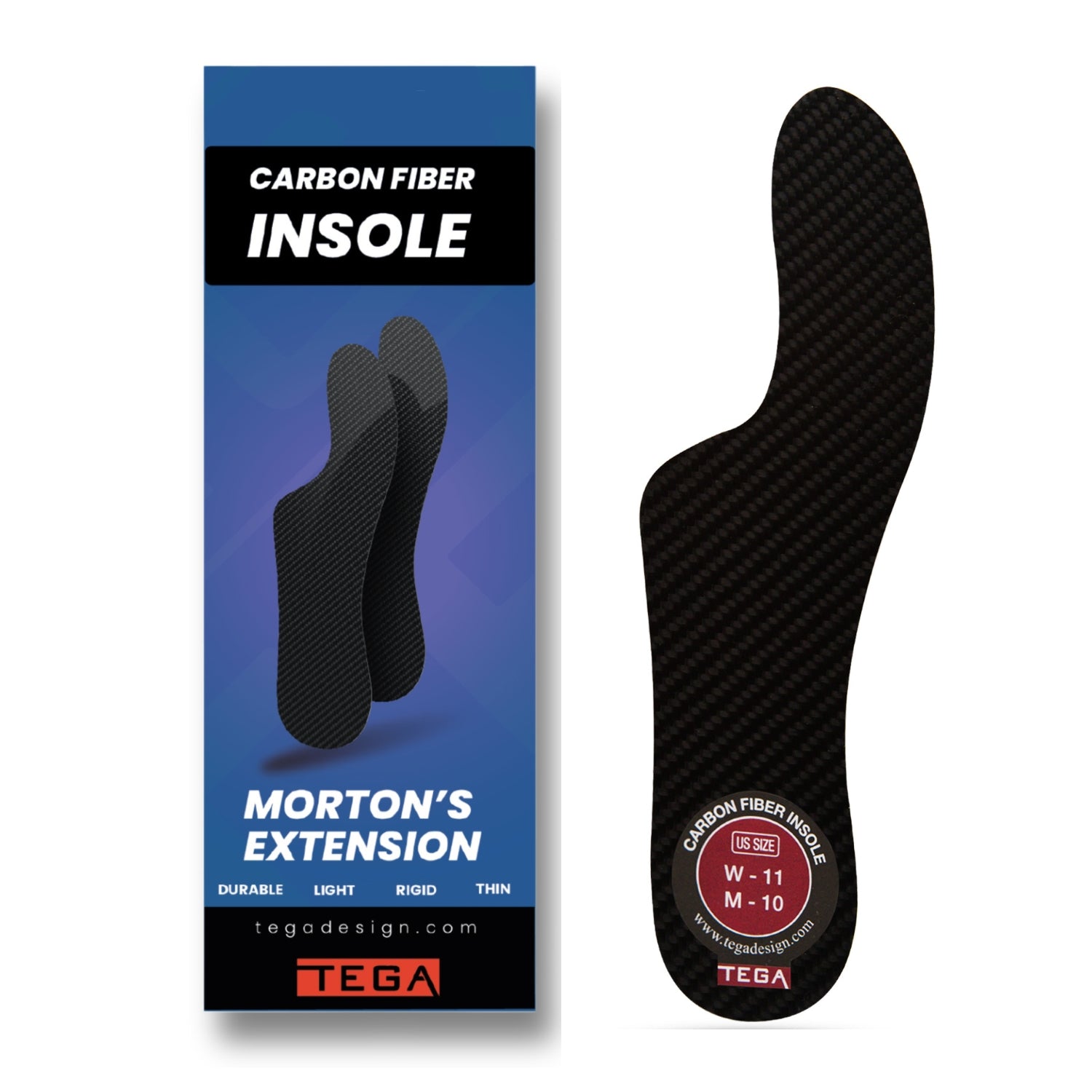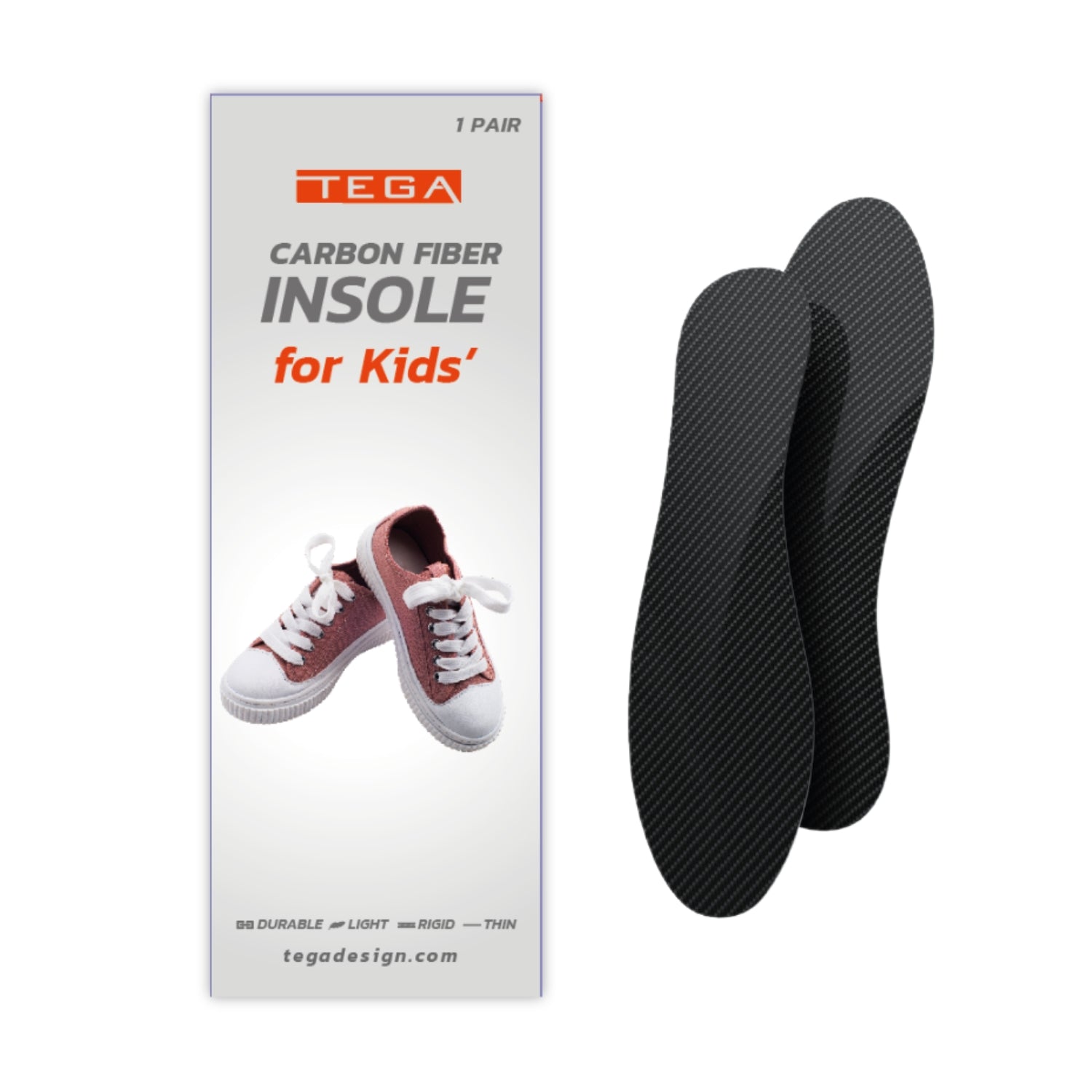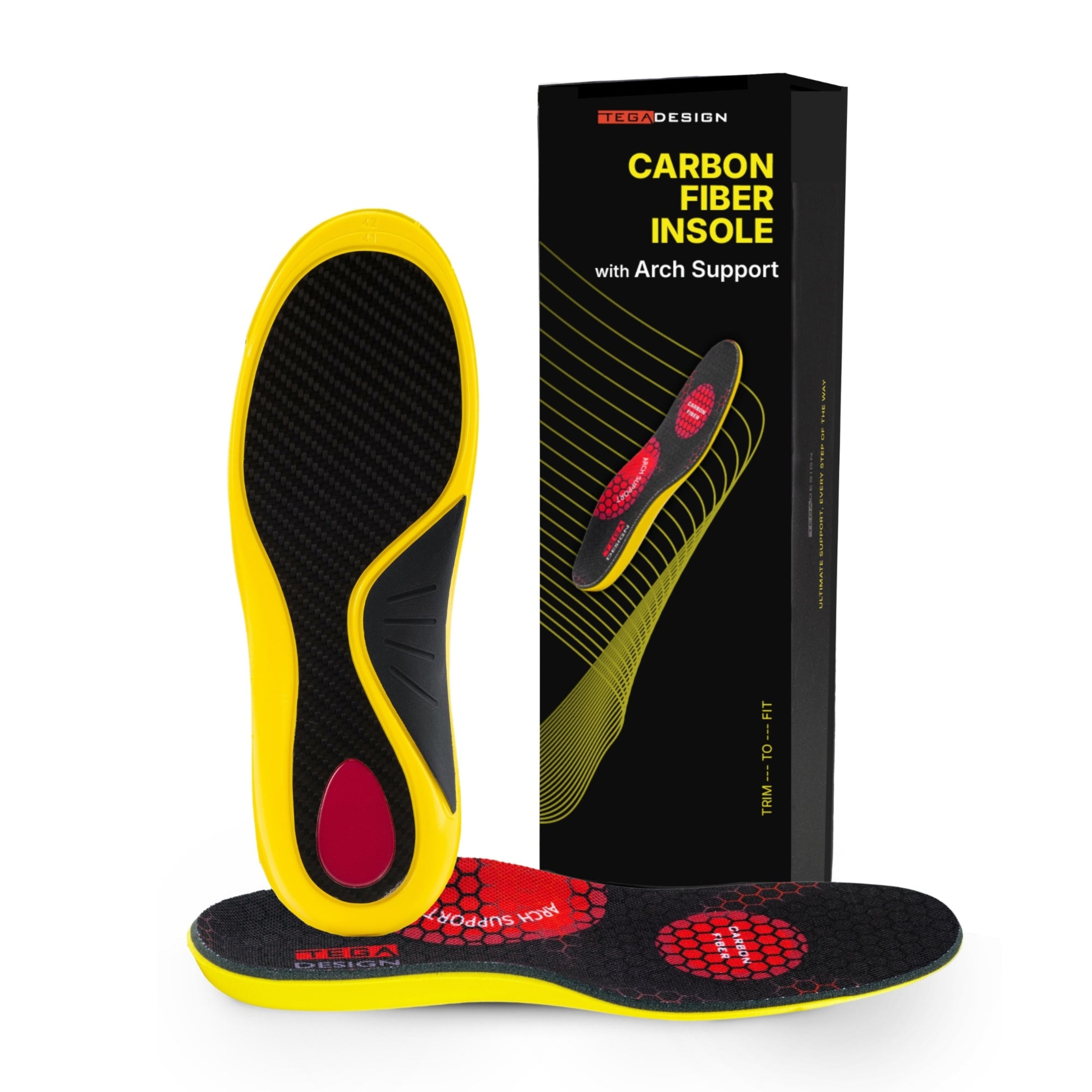Semi-Rigid Carbon Fiber Insole (1.1 mm)
Rigid Carbon Fiber Insole (1.3mm)
Very Rigid Carbon Fiber Insole (1.5mm)
Morton's Extension Orthotic (1.3mm)
Kid's Carbon Fiber Insole For Idiopathic Toe Walking
Carbon Fiber Insole with Arch Support
Carbon fiber insoles have become a game-changer for athletes, active individuals, and those seeking relief from foot issues. Known for their lightweight strength and flexibility, carbon fiber provide support that can help enhance performance across various activities, from running and basketball to soccer and high-impact sports. Whether you’re dealing with foot pain or looking to boost your athletic ability, carbon fiber insoles might be the perfect addition to your footwear.
Best Carbon Fiber Insoles for Different Activities
When it comes to finding the best carbon fiber insoles, it’s essential to consider your specific needs and activities. Different types of carbon fiber insoles are designed to cater to various sports and physical demands, ensuring that you get maximum performance benefits. If you require additional foot support, consider using carbon fiber insoles with arch support to enhance comfort and stability.
Best Carbon Fiber Insoles for Running
Runners benefit from the shock absorption and support that carbon fiber insoles provide. These insoles are crafted to maintain foot alignment and reduce the strain on the feet, enhancing both endurance and comfort during long-distance runs. Look for insoles for running with arch support and padding for extra cushioning on long runs.
Carbon Fiber Insoles for Basketball
Basketball requires agility, rapid direction changes, and a lot of jumping. Insoles for basketball are designed to be lightweight yet durable, giving players the stability and support they need for maximum agility on the court. Basketball-specific carbon fiber insoles are an excellent option for those looking to reduce foot fatigue and boost jumping ability.
Carbon Fiber Insoles for Soccer and Football
Soccer and football players need insoles that fit well in cleats and provide support for sudden changes in movement. Carbon fiber insoles for soccer cleats help improve foot stability and agility, which can make a difference in performance on the field.
Carbon Fiber Insoles for Hallux Rigidus
For those suffering from hallux rigidus (stiffness of the big toe), carbon fiber insoles are a top choice. The rigid structure of carbon fiber helps restrict the movement of the big toe, relieving pain and providing support to reduce discomfort. Many find relief from symptoms with these insoles for hallux rigidus as they provide support without additional bulk.
Carbon Fiber Insoles for Plantar Fasciitis
For individuals with plantar fasciitis, carbon fiber insoles help by reducing the strain on the heel and arch. The rigidity of carbon fiber helps distribute weight more evenly across the foot, easing pressure on the heel and promoting quicker recovery from foot pain.
Benefits of Carbon Fiber Shoe Insoles
Carbon fiber shoe insoles offer numerous benefits, particularly for those seeking enhanced support, durability, and pain relief. One of the main advantages is stability; the rigid yet lightweight structure of carbon fiber helps control foot movement, improving balance and reducing the risk of injury. Durability is another key benefit—carbon fiber insoles are long-lasting and maintain their shape even under intense use, making them ideal for athletes and active individuals. Additionally, their lightweight comfort means they don’t add bulk to shoes, providing support without sacrificing flexibility or agility. For individuals with foot issues like plantar fasciitis or hallux rigidus, carbon fiber insoles offer targeted support to alleviate pain by evenly distributing pressure across the foot. This combination of stability, durability, and pain relief makes carbon fiber insoles a valuable choice for both sports and everyday wear.
These insoles provide a range of benefits due to the unique properties of carbon fiber:
-
Enhanced Stability: Carbon fiber’s rigidity ensures better foot support by reducing excessive foot movements, leading to improved balance.
-
Durability: Carbon fiber is known for its long-lasting durability, meaning your insoles won’t need to be replaced as frequently.
-
Lightweight Comfort: Unlike traditional materials, carbon fiber insoles are both lightweight and supportive, making them a favorite for long-distance runners and high-impact sports enthusiasts.
-
Pain Relief for Specific Conditions: Conditions like plantar fasciitis and hallux rigidus benefit significantly from carbon fiber insoles because of the targeted support they provide.
Do Carbon Fiber Insoles Actually Work?
The answer is yes! Numerous studies and user experiences indicate that carbon fiber insoles improve comfort, provide pain relief, and offer enhanced support, especially in sports or for those with specific foot conditions.
Do Carbon Fiber Insoles Make You Jump Higher?
While carbon fiber insoles don’t necessarily make you “jump higher,” they do provide extra stability and support. This stability can boost confidence in high-intensity sports like basketball, where explosive jumps are required.
Carbon Fiber Insoles for Kids
Kids who play sports or suffer from foot conditions can also benefit from custom carbon fiber insoles. These kids insoles offer firm support and may be customized to fit their shoes, enhancing performance and reducing injury risk.
Differences Between Insoles
There are several types of insoles, each designed to address specific needs and provide varying levels of support. Morton’s extension are crafted to alleviate pressure on the forefoot, especially for those with Morton’s neuroma, helping to reduce pain in the ball of the foot. Carbon fiber insoles for kids offer lightweight, durable support tailored to active children, promoting proper foot alignment and reducing injury risk. Rigid carbon insoles and very rigid insoles are typically used for conditions requiring maximum stability, like hallux rigidus, providing firm support to limit joint movement. In contrast, semi-rigid insoles balance flexibility and support, making them ideal for moderate foot control without sacrificing comfort.
| Insole Type | Key Features | Best For | User Experience |
|---|---|---|---|
| Semi-Rigid Carbon Fiber Insole | Balance of flexibility and strength, mild support, mild pronation control. | Everyday use, walking, light sports. | Easily fits into shoes, less fatiguing. |
| Rigid Carbon Fiber Insole | Maximum strength and support, moderate to severe pronation control, high-impact sports. | Running, cycling, basketball, metatarsal breaks, turf toe, hallux rigidus and limitus. | Enhances energy transfer and ankle stability. |
| Very-Rigid Carbon Fiber Insole | Highest level of strength and stability, severe foot problems, heavy load support. | Severe foot deformities, prolonged standing, carrying heavy loads. | Provides maximum support and protection. |
How Do Carbon Fiber Insoles Work?
Carbon fiber insoles work by using the lightweight yet highly durable properties of carbon fiber to provide structured support and stability for the feet. The rigid nature of carbon fiber allows the insole to maintain the foot’s natural alignment, preventing excessive movement that can lead to discomfort or injury. This stability helps to distribute pressure evenly across the foot, which can reduce strain on high-impact areas like the arch and heel. Additionally, carbon fiber’s resilience absorbs and disperses shock effectively, making each step or jump feel smoother and less taxing on the joints. For those with conditions like plantar fasciitis or hallux rigidus, carbon fiber insoles limit excessive toe and arch movement, offering relief and support exactly where it's needed. This combination of support, shock absorption, and targeted pain relief helps improve both comfort and performance in everyday activities and sports.
Do Carbon Fiber Insoles Come with a Warranty?
Yes, many come with a warranty covering material and workmanship defects. Our insoles include a 3-year warranty.
Can Carbon Fiber Insoles Be Cut to Fit?
No, carbon fiber insoles are not designed to be cut as this can compromise their integrity and effectiveness.
How Long Do Carbon Fiber Insoles Typically Last?
Carbon fiber insoles last 6 months to 2 years, depending on usage, activity level, and care.
Are Carbon Fiber Insoles Suitable for All Types of Shoes?
These insoles are versatile for athletic, casual, and work shoes but not suitable for high heels or narrow shoes.
Which Material Is Best for Insoles?
The best material depends on your needs: Carbon fiber for high-impact activities, gel for extra cushioning, and foam for moderate support and everyday use.
For Which Sports Can Carbon Fiber Insoles Be Used?
Carbon fiber insoles are beneficial for running, soccer, cycling, basketball, hiking, golf, football, and tennis.
Do Carbon Fiber Insoles Actually Help?
Yes, they enhance stability, energy return, and support for athletes and those with foot conditions.
What Is the Benefit of Carbon Insoles?
They improve performance by enhancing energy transfer, reducing fatigue, and providing strong support.
How Long Do Carbon Fiber Insoles Last?
With regular use, they last between 6-12 months, depending on activity level.
Are Carbon Fiber Inserts Good for Plantar Fasciitis?
Yes, they reduce strain on the arch, providing support and relief for plantar fasciitis.
Do Carbon Insoles Make You Run Faster?
They improve running efficiency, which may lead to faster performance.
Why Do People Use Carbon Fiber Insoles?
They are used for improved athletic performance, better support, and injury prevention.
How to Wear a Carbon Fiber Insole?
Insert them into your shoes, ensuring they sit flat without overlapping existing insoles.
Are Carbon Fiber Insoles Comfortable?
Yes, they provide comfort and support, though preferences may vary.
Let customers speak for us
- Choosing a selection results in a full page refresh.
- Opens in a new window.

